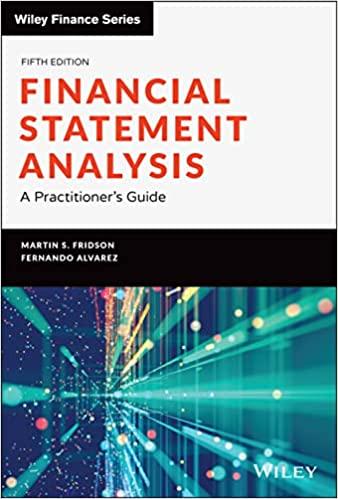Question
Survey empirical evidence to discuss the impact of government regulations (e.g., SarbanesOxley Act of 2002 and DoddFrank Wall Street Reform and Consumer Protection Act of
Survey empirical evidence to discuss the impact of government regulations (e.g., SarbanesOxley Act of 2002 and DoddFrank Wall Street Reform and Consumer Protection Act of 2010) on corporate operation and financial performance.
Please provide discussion of the above topic and citation of resources.
Thanks! Please follow what i have done below. Im looking for some help analyzing some of the details.
Several factors impact corporate financial planning, performance and operation. Elements include market trends, industry standard, market cycles and seasonal trends to name a few. One factor that arguably has the biggest impact are government regulations. These government regulations include, but are not limited to, the Securities Act of 1933, the Securities Exchange Act of 1934, the Fair Labor Standards Act of 1938, and more recently, the Sarbanes-Oxley Act of 2002 and the Dodd-Frank Wall Street Reform and Consumer Protection Act of 2010. Before we begin to discuss how these government regulations affect corporate financial planning, performance and operation, we should first discuss why these regulations were brought about in the first place.
In the decade of the 1920s, the United States economy was booming. The decade became known as the roaring 20s because of the prosperity felt throughout the entire country. Then, in October of 1929, it all came crashing down. The Dow Jones Industrial Average lost 29% of its value. Subsequently, several high profile individuals were charged with various crimes. Albert Wiggin, chief executive of Chase, was charged with short selling the stock of his own bank before the crash. Charles E. Mitchell, chief executive of National City Bank, was arrested for income tax evasion on share deals. Richard Whitney, vice president of the New York Stock Exchange, was arrested for embezzlement. These events led to the creation of the Securities Act of 1933. (1)
The Securities Act of 1933 regulates sales of securities at the federal level. This lead to the Securities Exchange Act of 1934, which regulates the sale of securities in the secondary market. There are several reasons the Act of 1934 was enacted. One was to ensure transparency in stock trading so investors could make informed decisions on real data. The Act required companies to register with the Securities and Exchange Commission and submit audited annual financial statements. Information a company is required to provide in registration includes a companys business description, description of securities being offered, information about securities if different from common stock and information about the management of issuing company. (2)
In the late 1990s and early 2000s, several scandals rocked the corporate world. Corporations such as Enron, Tyco and Worldcom were just a few that ultimately went bankrupt because of fraudulent accounting practices. Employees of these corporations lost their retirement accounts. Outside investors also lost their investments. As a result and similar to the Acts of 1933 and 1934, legislation was passed in an attempt to fix the problem. Sarbanes-Oxley, or the official name of Public Company Accounting Reform and Investor Protection Act of 2002, was the legislation enacted. Under Sarbanes-Oxley, the Public Company Accounting Oversight Board (PCAOB) was created. The task of the PCAOB was to enlist auditors to enforce existing laws against theft and fraud by corporate officers. It also required corporations to rotate auditors every five years and also established rules regarding auditor/corporation relationships. (3)
The economic downturn and subsequent recession of 2008 - 2009 brought about more changes to the corporate financial world. The Dodd-Frank Wall Street Reform and Consumer Protection Act of 2010 was enacted. This legislation is an effort to overhaul the United States financial regulatory system. The Act created the Bureau of Consumer Financial Protection (CFPB) to enforce existing and new federal consumer finance laws. The CFPB has powers over corporations who offer financial products and services. This include consumer credit, financial advising services, consumer leasing, appraisal of real and personal property, debt settlement, debt collecting, just to name a few. (4)
Each of these examples brought about change to the financial world. Each regulation affects how a corporation operates. The following paragraphs will discuss how government regulations affect financial reporting, valuing a corporation and how to value sock prices and dividends for shareholders.
Step by Step Solution
There are 3 Steps involved in it
Step: 1

Get Instant Access to Expert-Tailored Solutions
See step-by-step solutions with expert insights and AI powered tools for academic success
Step: 2

Step: 3

Ace Your Homework with AI
Get the answers you need in no time with our AI-driven, step-by-step assistance
Get Started


